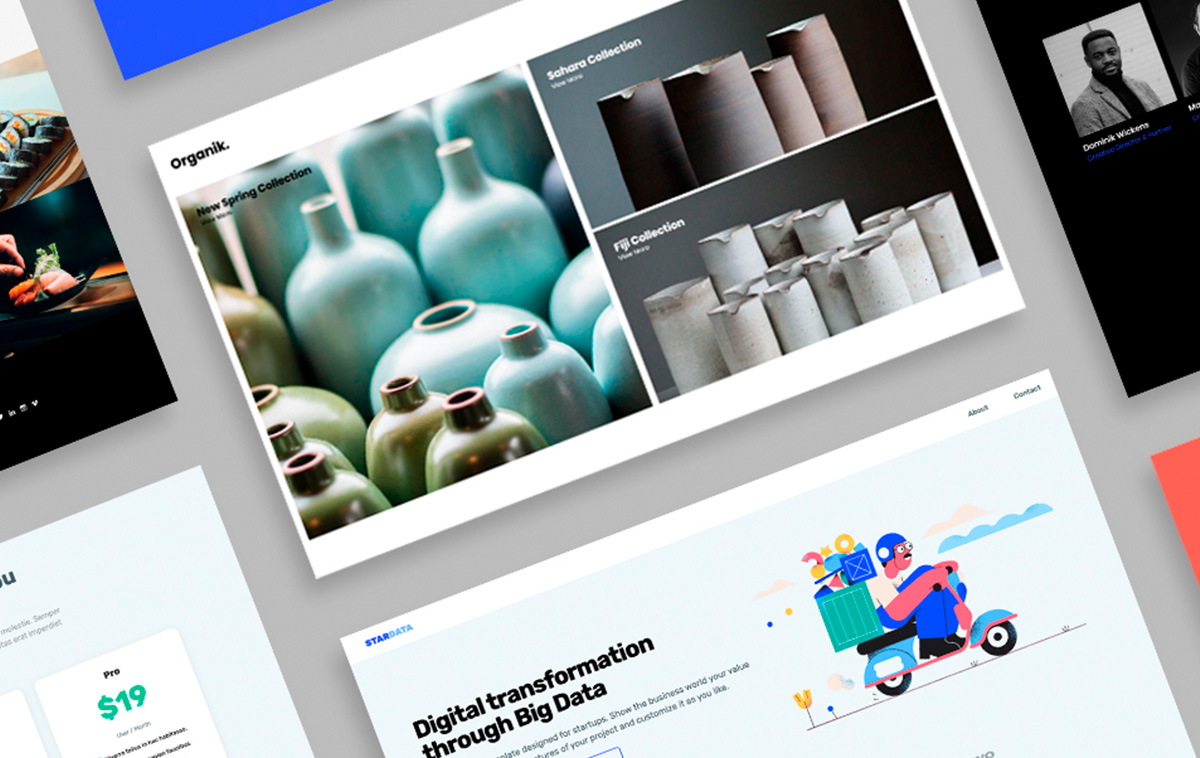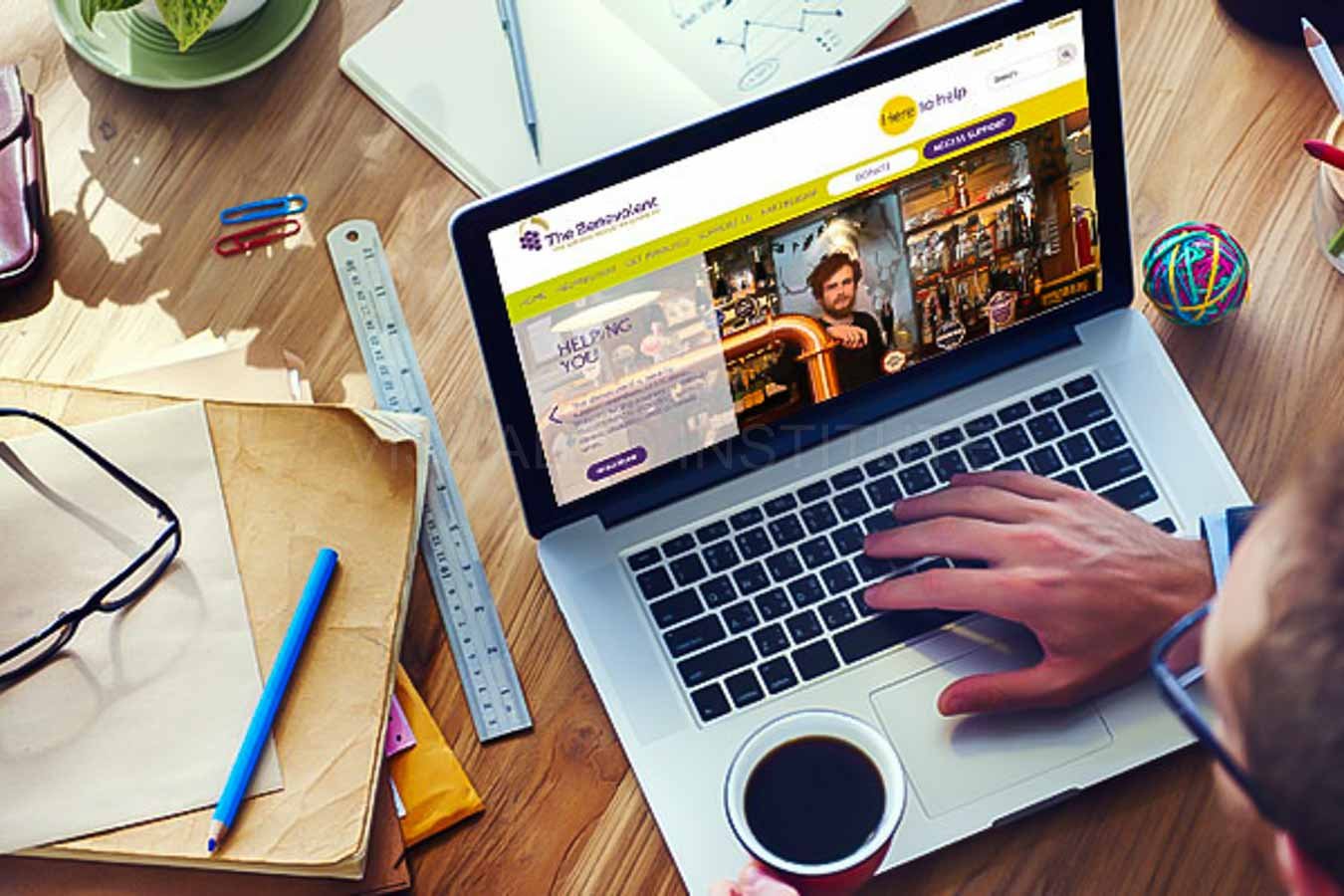The Most Effective Kinds of Website Design to Boost Customer Experience and Involvement
In the ever-evolving landscape of digital communication, the effectiveness of website design significantly influences individual experience and interaction. Different design approaches, such as minimalist, responsive, and interactive layouts, each offer one-of-a-kind benefits that can accommodate varied individual demands. Understanding which sorts of Web design best serve these purposes can be essential for businesses aiming to improve consumer satisfaction and retention. Nonetheless, the inquiry stays: which style aspects truly reverberate with individuals and foster purposeful involvement? The exploration of these concepts reveals critical understandings that may redefine your method to Web style.
Minimalist Web Layout
As electronic landscapes end up being increasingly cluttered, minimal Web design has actually arised as an effective technique to improving user experience. This design viewpoint prioritizes simpleness, focusing on crucial elements while getting rid of unnecessary distractions. By utilizing enough white space, straightforward navigation, and a restricted shade combination, minimalist layout cultivates clarity and directs customer focus to key material.
The core concept of minimalist website design is to develop a seamless interaction for users. By decreasing cognitive lots, users can quickly comprehend info without feeling overwhelmed. This straight approach not only boosts functionality however likewise encourages interaction, as visitors are much more most likely to check out a website that is aesthetically enticing and simple to navigate.
Additionally, minimalist layout often emphasizes typography and images, using these components purposefully to convey messages effectively. In significance, minimalist Web style is not just a pattern; it is a thoughtful methodology that identifies the significance of user-centered design.
Receptive Web Layout
In today's diverse digital setting, receptive website design has become necessary for producing a smooth user experience throughout a wide range of tools. As users gain access to internet sites on smartphones, laptops, desktops, and tablet computers, the capacity of a site to adjust its design and web content to different display dimensions and resolutions is essential.
Receptive Web style utilizes adaptable grids, photos, and CSS media questions to make sure that Web content exists ideally, despite the gadget made use of. This strategy not only boosts the visual appeal of a web site but also dramatically enhances usability. Users are most likely to involve with a site that uses a consistent experience, as it eliminates the irritation of having to focus or scroll exceedingly.
By embracing responsive style, companies can improve their exposure and reach a broader target market. In recap, responsive Web layout is a basic method that improves individual experience, involvement, and total contentment.
Interactive Website Design
Receptive website design lays the groundwork for improving user experience, however interactive website design takes this an action better by involving individuals in a more vibrant method - Aligned Position Web Design. By incorporating components such as computer animations, clickable prototypes, and real-time responses, interactive Web style captivates users, drawing them right into a richer browsing experience
This strategy not only promotes interaction yet additionally discover this urges individuals to check out material proactively rather than passively consuming it. Strategies such as gamification, where customers earn rewards for completing jobs, can significantly boost the moment invested in a website and boost total satisfaction. Interactive features can streamline intricate info, making it a lot more absorbable and enjoyable.

Including interactive design aspects can also result in higher conversion rates, as customers are Related Site most likely to engage with a site that proactively entails them. Aligned Position Web Design. Inevitably, interactive Web style changes user experiences into unforgettable journeys, ensuring that visitors return time and once more
Flat Design
Characterized by its minimalistic technique, flat style emphasizes simpleness and functionality, removing unneeded components and concentrating on necessary features. This style ideology prioritizes use, making certain that individuals can navigate interfaces effortlessly and effectiveness. By using a clean aesthetic, level style gets rid of the mess typically discovered in much more ornate designs, thereby boosting individual concentrate on material and capability.
The characteristic of flat layout hinges on its use bold shades, basic typography, and geometric shapes. These elements add to a visually appealing user interface that is both friendly and modern. In addition, flat style fosters a sense of clearness, enabling customers to recognize crucial actions and details without disturbance.
Furthermore, level style is specifically reliable in responsive website design, as its simplicity translates well across different gadgets and screen dimensions. The absence of complex textures and slopes minimizes packing times, which is crucial for preserving user engagement. As digital landscapes remain to develop, level style stays a relevant option for developing easy to use websites that enhance general experience. By concentrating on important features, level layout not only satisfies customer demands but additionally urges seamless communication, making it an essential component of efficient Web layout methods.
Adaptive Web Style
Flexible Web layout personalizes the individual experience by creating numerous dealt with designs tailored to various display sizes and gadgets. Unlike responsive design, which fluidly changes a single layout, adaptive style uses unique formats for particular breakpoints, making sure optimal presentation on numerous platforms. This strategy permits developers to focus on the special qualities of each tool, improving Go Here usability by supplying exactly what users need based on their context.
Among the primary benefits of adaptive website design is its capability to maximize tons times and efficiency. By offering customized material and photos that fit the user's tool, websites can reduce information use and improve loading rates. This is particularly useful for users with slower connections or restricted information plans.

Furthermore, flexible design facilitates a much more consistent and controlled branding experience. Because developers produce numerous layouts, they can make sure that the visual elements line up with the brand name's identification across different systems - Aligned Position Web Design. This causes a cohesive individual experience, improving involvement and promoting individual retention
Conclusion
In conclusion, the assimilation of minimalist, receptive, and interactive Web style concepts considerably boosts customer experience and engagement. Minimal style promotes quality and emphasis, while receptive layout guarantees adaptability across different devices, promoting accessibility. Interactive design captivates users through vibrant elements, motivating expedition and personalization. Jointly, these design comes close to add to the development of user-friendly atmospheres that not only boost satisfaction but also drive higher conversion rates, highlighting their critical relevance in contemporary Web design methods.

Minimal style cultivates clearness and focus, while receptive layout makes certain versatility throughout numerous devices, advertising availability. Collectively, these design approaches contribute to the creation of straightforward atmospheres that not only enhance satisfaction yet likewise drive greater conversion rates, emphasizing their critical importance in modern Web layout strategies.